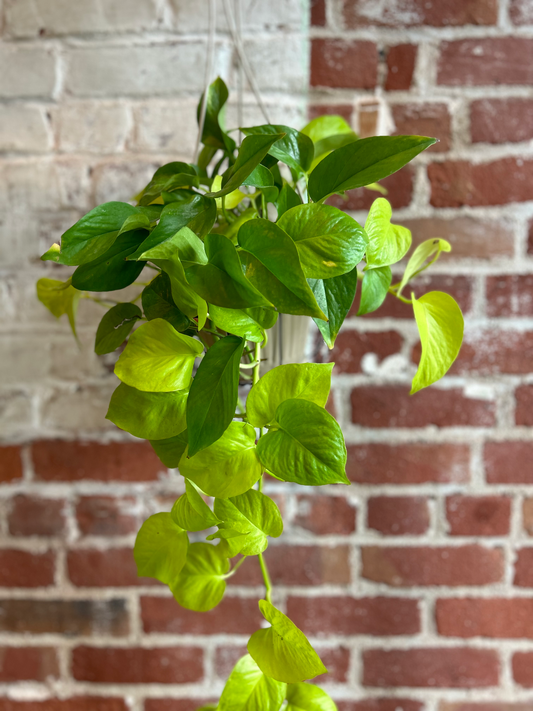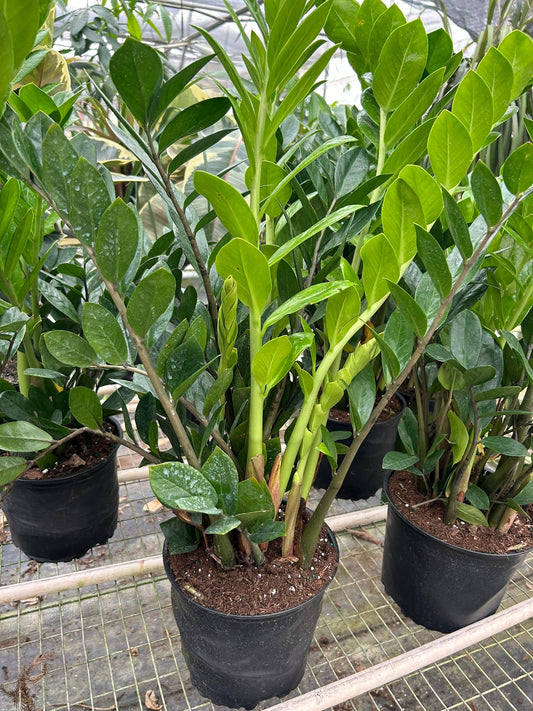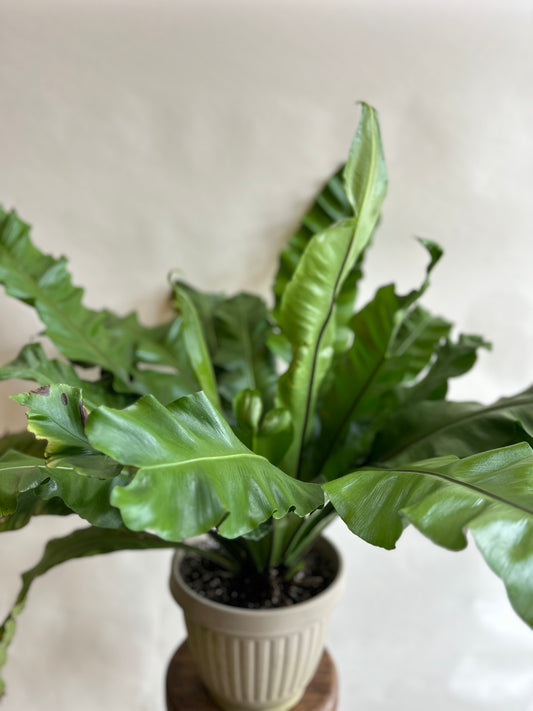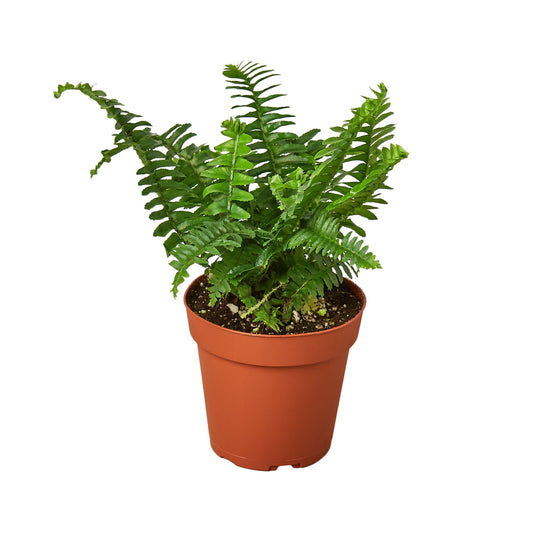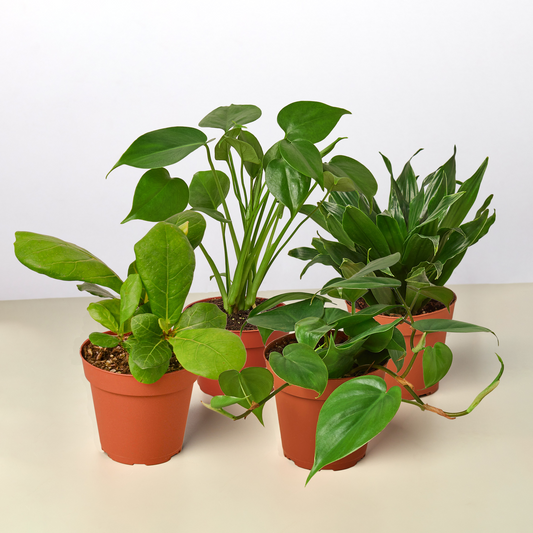How to Grow and Care for Vanda Orchids
Cafe Planta Team
Vanda orchids are the divas of the orchid world, known for their vibrant colors and striking appearance. These stunning flowers can transform any space into a tropical paradise. But don't be fooled by their beauty—Vandas can be a bit more demanding than your average houseplant. If you’re ready to take on the challenge, you'll be rewarded with a spectacular display that's well worth the effort.
This blog post will guide you through everything you need to know about growing and caring for Vanda orchids. We’ll cover topics like choosing the right environment, watering, feeding, and dealing with common pests and diseases. Whether you're a seasoned plant parent or a newbie, you’ll find tips and tricks to help your Vandas thrive.
Understanding Vanda Orchids
Before diving into the care specifics, it's helpful to get to know these unique plants a bit better. Vanda orchids hail from Southeast Asia and are known for their large, waxy flowers and robust growth. They typically grow on trees in their natural habitat, which means they love bright light and plenty of air circulation.
Unlike many other orchids, Vandas don’t usually grow in potting soil. Instead, they prefer to have their roots exposed to the air, mimicking their natural environment. This can make them a bit tricky to care for indoors, but with the right setup, you can create a home environment they'll love.
Vandas come in a variety of colors, from deep purples and blues to vibrant oranges and yellows. Their blooms can last for weeks, providing a long-lasting splash of color in your home. But be prepared: Vandas can take a bit of time to bloom, so patience is key.
Choosing the Right Environment
Creating the perfect environment for your Vanda orchid is crucial to its success. These plants are sun lovers, so you'll need to find a spot in your home that gets plenty of bright, indirect light. A south or east-facing window is often ideal.
Vandas also thrive in warm, humid conditions. If your home tends to be on the dry side, consider using a humidity tray or a small humidifier to boost the moisture in the air. Alternatively, you can mist your orchid regularly to keep it happy.
Air circulation is another important factor for Vandas. In their natural habitat, these orchids hang from trees with their roots exposed, allowing them to get plenty of fresh air. Try to replicate this by placing your Vanda in a well-ventilated area and avoid cramming it into a tight space.
- Light: Bright, indirect sunlight is best.
- Temperature: Keep between 70-85°F during the day and above 60°F at night.
- Humidity: Aim for 60-80% humidity or higher.
- Ventilation: Ensure good air movement around the plant.
Watering Your Vanda Orchid
Watering is one of the trickiest aspects of Vanda care. These orchids don’t like to stay too wet, but they also don’t want to dry out completely. The key is to find a balance that keeps the roots moist but not soggy.
Because Vandas often grow without soil, a popular method of watering is to soak the roots in water for about 15 to 30 minutes. You can do this every few days, depending on how quickly they dry out. Be sure to let the roots dry out completely between waterings to prevent root rot.
If you notice your Vanda’s roots turning silver, it’s a sign they need water. On the other hand, if they’re green and plump, they’re likely well-hydrated. Adjust your watering schedule based on these visual cues.
- Soak Method: Submerge roots in water every few days for 15-30 minutes.
- Signs of Thirst: Silver roots indicate a need for water.
- Post-Watering: Allow roots to dry completely to avoid rot.
Feeding Your Vanda Orchid
Vandas are heavy feeders and benefit from regular fertilization. During the growing season, typically from spring to early fall, you should feed your orchid every 1-2 weeks with a balanced orchid fertilizer. A common approach is the “weakly, weekly” method, where you dilute the fertilizer to half or even a quarter of its recommended strength and apply it every week.
In the cooler months, you can reduce feeding to once a month since the plant's growth will slow down. Always follow the instructions on your fertilizer packaging, and be sure to flush the plant with plain water occasionally to prevent salt buildup, which can harm the roots.
Remember to feed only when the roots are damp. Fertilizing dry roots can lead to fertilizer burn, which is a sure way to stress your plant.
- Frequency: Feed every 1-2 weeks during growth season.
- Method: Use "weakly, weekly" by diluting fertilizer.
- Winter Feeding: Reduce to monthly feeding.
- Flush: Use plain water to prevent salt buildup.
Repotting Vanda Orchids
Repotting Vanda orchids can be a bit different from repotting other plants, primarily because they often grow in baskets or mounted on slabs rather than traditional pots. You’ll know it’s time to repot when the plant outgrows its current setup or if the growing medium has broken down and is no longer supporting healthy growth.
When repotting, choose a basket or slab that's slightly larger than the current one. You can fill it with orchid bark or sphagnum moss to provide some support while allowing plenty of air to reach the roots. Handle the roots gently, as they can be quite fragile.
Repotting can also be a good time to trim any dead or damaged roots. Use sterilized scissors to make clean cuts, and avoid removing healthy roots. After repotting, hold off on watering for a few days to let the plant adjust to its new environment.
- When to Repot: Outgrown basket or deteriorated medium.
- Choice of Container: Use a slightly larger basket or slab.
- Handling Roots: Be gentle and trim only dead roots.
- Post-Repotting: Delay watering for a few days.
Dealing with Pests and Diseases
Vanda orchids can fall victim to common pests like spider mites, aphids, and mealybugs. Regularly inspect your plants for these unwelcome guests and act quickly if you spot any. You can often remove pests manually with a damp cloth or treat them with insecticidal soap.
Diseases in Vandas are usually caused by fungi or bacteria, often due to excessive moisture or poor air circulation. If you notice spots or discoloration on the leaves, it might be time to reassess your watering and ventilation practices. Fungicides can be used as a last resort, but prevention is always the best medicine.
Maintaining a clean growing environment is crucial. Remove any fallen leaves or debris promptly, and ensure your tools are sanitized before use to prevent the spread of pathogens.
- Common Pests: Watch for spider mites, aphids, and mealybugs.
- Pest Control: Use a damp cloth or insecticidal soap.
- Disease Prevention: Improve air circulation and adjust watering.
- Sanitation: Keep the area clean and tools sanitized.
Encouraging Blooms
Getting your Vanda orchid to bloom can be a bit of a challenge, but with some patience and the right conditions, you can enjoy those spectacular flowers. Vandas need plenty of light to bloom, so ensuring they get enough is essential. If you’re struggling with natural light, consider supplementing with grow lights.
Temperature shifts can also encourage blooming. Try exposing your Vanda to cooler night temperatures for a few weeks to stimulate the flowering process. Just be careful not to go below their comfort zone, typically around 60°F.
Another trick is to ensure your orchid is well-fed and healthy. A strong, well-nourished plant is more likely to produce flowers. Stay consistent with feeding and watering routines, and avoid stressing the plant with sudden environmental changes.
- Light: Ensure ample, bright light or supplement with grow lights.
- Temperature: Use cooler nights to trigger blooming.
- Nourishment: Keep the plant well-fed and healthy.
- Avoid Stress: Maintain consistent care routines.
Decorating with Vanda Orchids
Vanda orchids aren't just beautiful—they can also make a stunning addition to your home decor. Their bold colors and unique growth habits allow for creative display options. Whether hanging in baskets or mounted on a piece of driftwood, Vandas can add an exotic flair to any room.
Consider placing them in a sunlit bathroom where the humidity naturally stays high, or use them as a centerpiece in a bright living room. You can even hang them in front of a window in your kitchen, where they can enjoy the light and a bit of extra warmth from cooking.
Vandas can also be a conversation starter, so feel free to experiment with different display methods to find what works best for your space. Just remember to keep their care requirements in mind as you decide on the perfect spot.
- Display Options: Hang in baskets or mount on driftwood.
- Ideal Locations: Bright bathrooms, living rooms, or kitchens.
- Personal Touch: Experiment with creative arrangements.
- Care Considerations: Ensure light and humidity needs are met.
Common Mistakes and How to Avoid Them
Even the most experienced plant lovers can run into trouble with Vanda orchids. One common mistake is overwatering—these plants don't like to sit in water, so always allow the roots to dry between soakings. If you're unsure, it's better to underwater than overwater.
Another pitfall is inadequate light. Vandas need bright light to thrive, so if they're not blooming or growing well, they might need a sunnier spot. Similarly, ignoring humidity needs can lead to unhealthy plants. If your environment is dry, make sure you’re taking steps to boost humidity.
Finally, don’t overlook the importance of regular feeding. Vandas are heavy feeders, and skipping fertilization can lead to weak growth and poor blooms. Stick to a consistent feeding schedule and adjust as needed based on your plant's response.
- Overwatering: Allow roots to dry before re-watering.
- Inadequate Light: Ensure bright, indirect sunlight.
- Low Humidity: Use humidifiers or mist the plant.
- Neglecting Feeding: Follow a consistent fertilization routine.
Final Thoughts
Growing Vanda orchids can be a rewarding journey filled with vibrant colors and exotic blooms. By understanding their needs and committing to regular care, you can enjoy these stunning plants in your home.
At Cafe Planta, we're passionate about plant care and love to help you succeed with your houseplants. We offer a variety of plants, care accessories, and even plant-themed apparel. If you have questions or need advice, feel free to email us or reach out on Instagram. Let's grow together!


